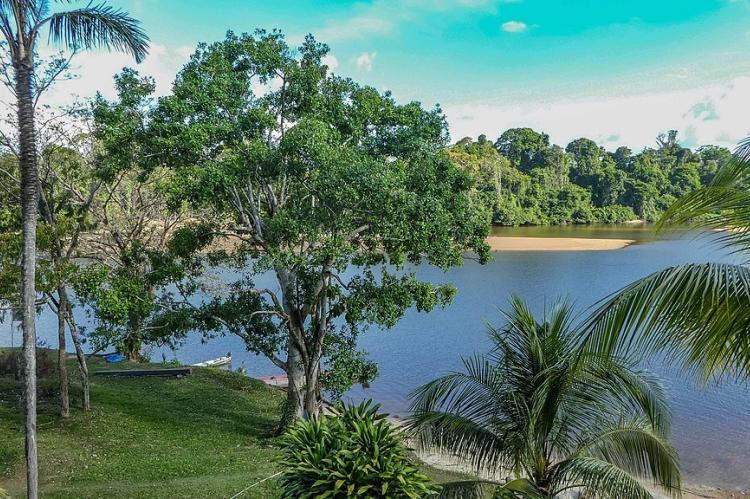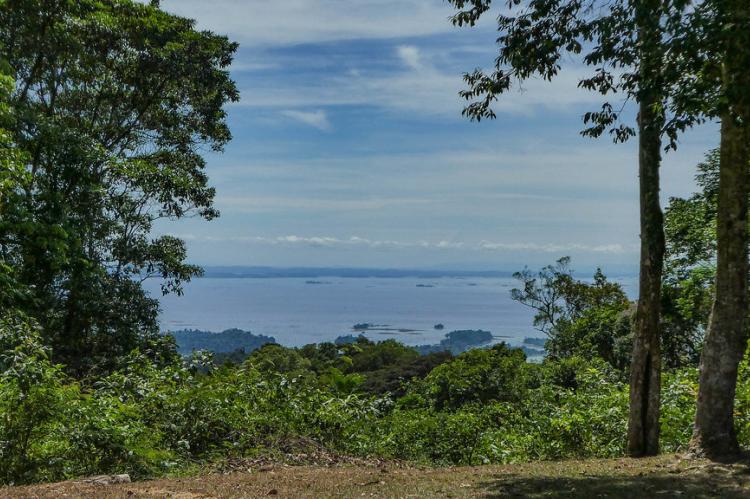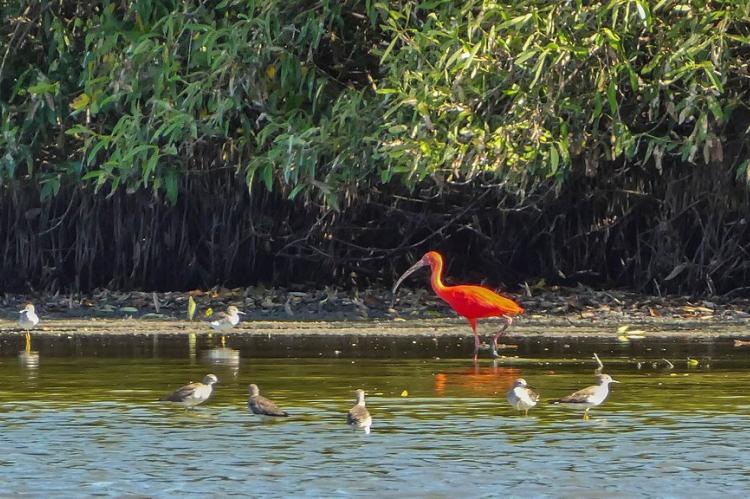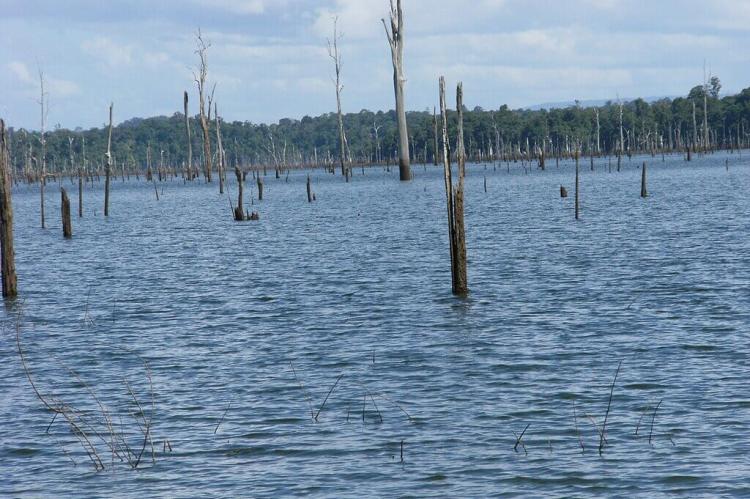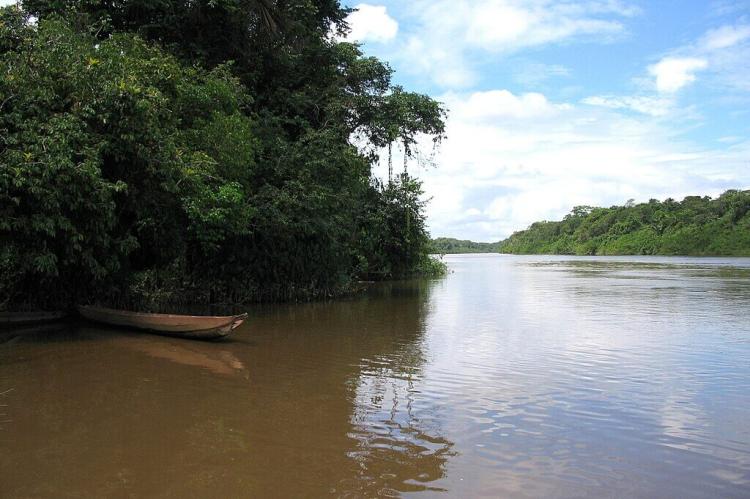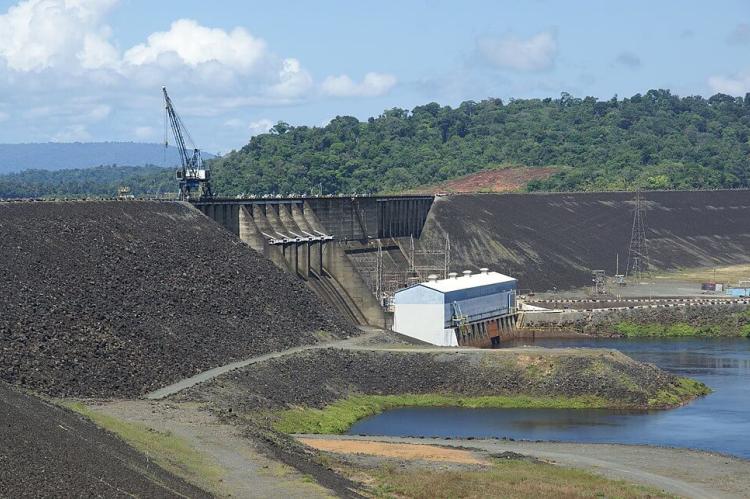Water Bodies of Suriname
Suriname's diverse water bodies support rich biodiversity and facilitate trade. Despite its short coastline, the country's estuaries and wetlands are home to unique ecosystems. Each water body is crucial to Suriname's identity and development, highlighting the relationship between nature and human activity.
Water Bodies of Suriname
Suriname, located on the northeastern coast of South America, is a hidden gem with a rich tapestry of biodiversity, vital ecosystems, and a landscape sculpted by its many water bodies. From the labyrinthine mangroves to the meandering riverine networks, Suriname's waterways are teeming with life, providing sanctuary to a diverse array of plant and animal species. Wetlands, mangroves, and river ecosystems are crucial habitats, nurturing delicate ecosystems and supporting the intricate web of life that thrives within them.
At the heart of Suriname's water landscape lie its significant rivers, whose meandering courses not only define the country's geography but also serve as lifelines for its development. These rivers, acting as natural transportation routes, facilitate trade and commerce, linking remote communities with urban centers and fostering connections that transcend geographical barriers.
Despite its relatively short coastline along the Atlantic Ocean, Suriname's coastal regions are replete with hidden treasures. Coastal lagoons, estuaries, and wetlands dot the shoreline, offering a haven for migratory birds, marine life, and indigenous flora. Each of these water bodies holds its own significance, shaping the rhythm of life in Suriname. Whether facilitating transportation and trade, supporting agriculture, or nurturing fragile ecosystems, they are integral to the country's identity and development.
Notable Rivers
Suriname River: The Suriname River is the country's most prominent and longest river, stretching approximately 480 km (298 mi). It originates in the Guiana Highlands of southern Suriname and flows northward through the central part of the country. The Suriname River is of immense importance for transportation, as it provides access to remote inland areas and connects the capital city, Paramaribo, to the interior regions. Its estuary is a natural harbor crucial to Suriname's trade and commerce.
Commewijne River: Flowing parallel to the Suriname River, the Commewijne River is another significant waterway in the country. It stretches about 80 km (50 mi) and runs through the districts of Commewijne and Paramaribo. The river is vital for transportation and is surrounded by rich agricultural lands.
Marowijne River: Also known as the Maroni River, this river forms the eastern border between Suriname and French Guiana. It originates in the Tumuk Humak Mountains and flows for approximately 480 km (298 mi) before reaching the Atlantic Ocean. The river is essential for both countries, serving as a natural boundary and a significant transportation route.
Corantijn River: Also known as the Courantyne River, this waterway forms the western border between Suriname and Guyana. It flows for about 724 km (450 mi) before emptying into the Atlantic Ocean. The river is historically significant, marking the former boundary between British Guiana (now Guyana) and Dutch Guiana (now Suriname).
Nickerie River: The Nickerie River is located in the western part of Suriname and flows for approximately 270 km (168 mi). It is an essential water source for agriculture in the Nickerie District, and its estuary provides a natural harbor for fishing and maritime activities.
Coppename River: The Coppename River is situated in the central part of Suriname and runs for approximately 370 km (230 mi) through central Suriname. It flows through a mix of rainforest and savanna landscapes and is utilized for transportation and irrigation.
Saramacca River: The Saramacca River, which stretches for about 230 km (143 mi) in the northern part of Suriname, is significant for transportation and provides access to various coastal and inland settlements.
Tapanahony River: Originating in the Tumuk Humak Mountains, the Tapanahony River flows through the southern rainforest region of Suriname for approximately 560 km (348 mi). It is an important river for the indigenous communities residing in the area.
Lawa River: The Lawa River is a tributary of the Marowijne River and marks the border between Suriname and French Guiana. It is approximately 380 km (236 mi) long and provides access to remote parts of the southeastern rainforest.
Estuaries
Suriname River Estuary: The country's most significant river flows into the Atlantic Ocean and forms an estuary. This estuary serves as a critical natural harbor and is the location of Suriname's capital city, Paramaribo. Tides influence the estuary area and serve as a vital transportation route for maritime activities.
Nickerie River Estuary: The Nickerie River is the westernmost major river in Suriname and flows into the Atlantic Ocean. The estuary formed by the river's mouth is ecologically significant and supports coastal ecosystems.
Maroni River Estuary: The Maroni River forms the border between Suriname and French Guiana. While it primarily belongs to French Guiana, the estuary's western bank is part of Suriname's territory. This estuary is crucial to the country's trade and transport activities.
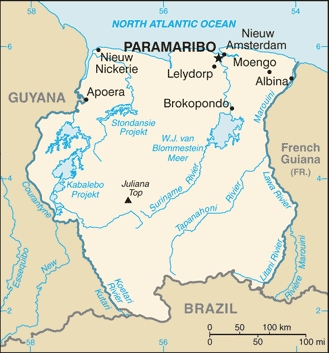
CIA Map of Suriname.
Reservoirs, Lakes, and Lagoons
Brokopondo Reservoir (Prof. Dr. Ir. W.J. van Blommesteinmeer): This reservoir is one of Suriname's most prominent water bodies. It was created by damming the Suriname River. The reservoir covers a vast area and is located in the central part of the country. Its primary purpose is to generate hydroelectric power for Suriname, making it a crucial energy source. The reservoir also offers opportunities for fishing and water-based recreational activities.
Brokopondomeer Zuid: Translated as "Brokopondo South Lake," this is a smaller lake located south of the main Brokopondo Reservoir.
Witikreek: Situated in the district of Sipaliwini, Witikreek is a well-known creek that occasionally expands into a lagoon during the rainy season. Pristine rainforests surround the area and serve as a habitat for various wildlife species.
Blanche Marie Lagoon: Located near the Blanche Marie Falls in western Suriname, this lagoon is another significant water body in the country. The remote area is surrounded by lush rainforests, making it an attractive destination for ecotourism and nature enthusiasts.
Coermotibo Reservoir: Also known as Prof. Dr. Ir. W.J. van Blommesteinmeer II, this reservoir was constructed to support mining operations in the area. It is situated in the Brokopondo District and contributes to the region's hydrology.
Coppenameplas: This lake is situated in the Coppename River area, providing a serene environment and serving as a natural habitat for various aquatic and bird species.
Wageningen Lake: This is a smaller lake located in the western part of the country, near Nickerie. It's primarily used for irrigation and is important for rice cultivation in the region.
Blommenstein Reservoir: Located near the capital city, Paramaribo, this reservoir supplies water to the city and surrounding areas. It's relatively small but crucial in providing freshwater to the population.
Bigi Pan (Big Lake): This coastal lagoon and wetland area near the Nickerie River is an essential habitat for birds and other wildlife and is known for its biodiversity.
